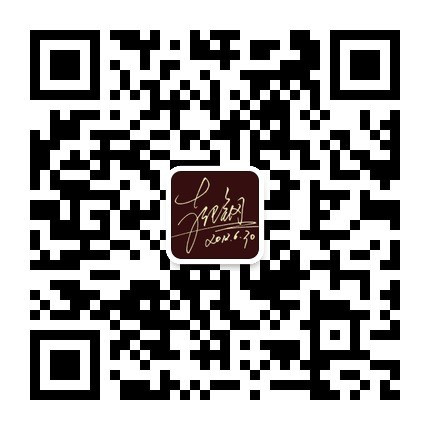Android样式的开发:Style篇
原创文章,转载请注明:转载自Keegan小钢
微信订阅号: keeganlee_me
写于2015-10-31
Android样式的开发:shape篇
Android样式的开发:selector篇
Android样式的开发:layer-list篇
Android样式的开发:drawable汇总篇
Android样式的开发:View Animation篇
Android样式的开发:Property Animation篇
Android样式的开发:Style篇前面铺垫了那么多,终于要讲到本系列的终篇,整合所有资源,定义成统一的样式。哪些该定义成统一的样式呢?举几个例子吧:
- 每个页面标题栏的标题基本会有一样的字体大小、颜色、对齐方式、内间距、外间距等,这就可以定义成样式;
- 很多按钮也都使用一致的背景、内间距、文字颜色、文字大小、文字的对齐方式等,这也可以定义成样式;
- 网络加载的进度条基本也都是一样的,同样可以定义成样式;
- 不喜欢系统的弹出框样式,那也可以自定义样式。
样式的定义
Android的样式一般定义在 res/values/styles.xml 文件中,其中有一个根元素 <resource> ,而具体的每种样式定义则是通过 <resource> 下的子标签 <style> 来完成, <style> 通过添加多个 <item> 来设置样式不同的属性。
另外,样式是可以继承的,可通过 <style> 标签的 parent 属性声明要继承的样式,也可通过点前缀 (.) 继承,点前面为父样式名称,后面为子样式名称。点前缀方式只适用于自定义的样式,若要继承Android内置的样式,则只能通过 parent 属性声明。
用个实例说明具体的用法吧,以下代码为Android 5.0系统默认的按钮样式:
<style name="Widget.Material.Button"> <item name="background">@drawable/btn_default_material</item> <item name="textAppearance">?attr/textAppearanceButton</item> <item name="minHeight">48dip</item> <item name="minWidth">88dip</item> <item name="stateListAnimator">@anim/button_state_list_anim_material</item> <item name="focusable">true</item> <item name="clickable">true</item> <item name="gravity">center_vertical|center_horizontal</item> </style>
其中, stateListAnimator 指定状态改变时的动画, button_state_list_anim_material 的代码如下:
<!-- res/anim/button_state_list_anim_material.xml --> <?xml version="1.0" encoding="utf-8"?> <selector xmlns:android="http://schemas.android.com/apk/res/android"> <item android:state_pressed="true" android:state_enabled="true"> <set> <objectAnimator android:propertyName="translationZ" android:duration="@integer/button_pressed_animation_duration" android:valueTo="@dimen/button_pressed_z_material" android:valueType="floatType" /> <objectAnimator android:propertyName="elevation" android:duration="0" android:valueTo="@dimen/button_elevation_material" android:valueType="floatType" /> </set> </item> <!-- base state --> <item android:state_enabled="true"> <set> <objectAnimator android:propertyName="translationZ" android:duration="@integer/button_pressed_animation_duration" android:valueTo="0" android:startDelay="@integer/button_pressed_animation_delay" android:valueType="floatType"/> <objectAnimator android:propertyName="elevation" android:duration="0" android:valueTo="@dimen/button_elevation_material" android:valueType="floatType" /> </set> </item> <item> <set> <objectAnimator android:propertyName="translationZ" android:duration="0" android:valueTo="0" android:valueType="floatType"/> <objectAnimator android:propertyName="elevation" android:duration="0" android:valueTo="0" android:valueType="floatType"/> </set> </item> </selector>
可以看到,每种状态的动画为属性动画集,属性动画的用法请参考Property Animation篇。
现在我想继承 Widget.Material.Button 样式,改变背景和文字颜色,那么,代码如下:
<!-- res/values/styles.xml --> <resources> <style name="ButtonNormal" parent="@android:style/Widget.Material.Button" > <item name="android:background">@drawable/bg_btn_selector</item> <item name="android:textColor">@color/text_btn_selector</item> </style> </resources>
其中, @drawable/bg_btn_selector 和 @color/text_btn_selector 的实现请参照selector篇。
有些按钮,我只想改变文字颜色,但背景想让它透明,这时就可以用点前缀的方式继承以上的样式,代码如下:
<!-- res/values/styles.xml --> <resources> <style name="ButtonNormal" parent="@android:style/Widget.Material.Button"> <item name="android:background">@drawable/bg_btn_selector</item> <item name="android:textColor">@color/text_btn_selector</item> </style> <style name="ButtonNormal.Transparent"> <item name="android:background">@drawable/bg_btn_transparent</item> <item name="android:textColor">@color/text_btn_selector</item> </style> </resources>
引用的时候只要在相应的 Button 里添加 style 就可以了,代码如下:
<Button android:layout_width="wrap_content" android:layout_height="wrap_content" android:onClick="onAction" android:text="@string/btn_action" style="@style/ButtonNormal.Transparent" />
有时候,定义的样式太多,如果都放在 styles.xml 文件里,那这文件也太臃肿了。因此,可以将样式分类拆分成多个文件。Android系统本身也拆分为多个文件存放的,如下列表全都是样式文件:
styles.xml styles_device_defaults.xml styles_holo.xml styles_leanback.xml styles_material.xml styles_micro.xml themes.xml themes_device_defaults.xml themes_holo.xml themes_leanback.xml themes_material.xml themes_micro.xml其中,主要分为两大类,styles定义了简单的样式,而themes则定义了主题。
主题
以上的简单例子只用于单个 View ,这是样式最简单的用法。但样式的用法不只是用于单个 View ,也能用于 Activity 或整个 Application ,这时候需要在相应的 <activity> 标签或 <application>标签里设置 android:theme* 属性,引用的其实也是 style *,但一般称为主题。
Android系统提供了多套主题,查看Android的 frameworks/base/core/res/res/values 目录,就会看到有以下几个文件(目前为止):
- themes.xml :低版本的主题,目标API level一般为10或以下
- themes_holo.xml :从API level 11添加的主题
- themes_device_defaults.xml :从API level 14添加的主题
- themes_material.xml :从API level 21添加的主题
- themes_micro.xml :应该是用于Android Wear的主题
- themes_leanback.xml : 还不清楚什么用
不过在实际应用中,因为大部分都采用兼容包的,一般都会采用兼容包提供的一套主题: Theme.AppCompat 。 AppCompat 主题默认会根据不同版本的系统自动匹配相应的主题,比如在Android 5.0系统,它会继承Material主题。不过这也会导致一个问题,不同版本的系统使用不同主题,就会出现不同的体验。因此,为了统一用户体验,最好还是自定义主题。
自定义主题也很简单,只要继承某一父主题,然后在 <activity> 标签或 <application> 中引用就可以了。
主题的定义示例如下:
<resources> <style name="AppTheme" parent="Theme.AppCompat"> <item name="windowActionBar">false</item> <item name="windowNoTitle">true</item> <item name="windowAnimationStyle">@style/WindowAnimation</item> </style> <!-- Standard animations for a full-screen window or activity. --> <style name="WindowAnimation" parent="@android:style/Animation.Activity"> <item name="activityOpenEnterAnimation">@anim/activity_open_enter</item> <item name="activityOpenExitAnimation">@anim/activity_open_exit</item> <item name="activityCloseEnterAnimation">@anim/activity_close_enter</item> <item name="activityCloseExitAnimation">@anim/activity_close_exit</item> </style> </resources>
其中, WindowAnimation 重新指定了 Activity 的转场动画,以下为 activity_close_exit 的示例代码:
<!-- res/anim/activity_close_exit.xml --> <?xml version="1.0" encoding="utf-8"?> <set xmlns:android="http://schemas.android.com/apk/res/android" android:shareInterpolator="false" android:zAdjustment="top"> <alpha android:fromAlpha="0.0" android:toAlpha="1.0" android:interpolator="@interpolator/decelerate_quart" android:fillEnabled="true" android:fillBefore="false" android:fillAfter="true" android:duration="200" /> <translate android:fromYDelta="8%" android:toYDelta="0" android:fillEnabled="true" android:fillBefore="true" android:fillAfter="true" android:interpolator="@interpolator/decelerate_quint" android:duration="350" /> </set>
这是比较简单的视图动画,视图动画具体用法可参考View Animation篇。
接着,若要使用到整个Application,则在 AndroidManifest.xml 的 <application> 标签设置 android:theme 属性,示例代码如下:
<application android:allowBackup="true" android:icon="@mipmap/ic_launcher" android:label="@string/app_name" android:theme="@style/AppTheme"> <!-- activity here --> </application>
写在最后
至此,本系列所有文章就写完了,欢迎留言讨论。
扫描以下二维码即可关注订阅号。












![[HBLOG]公众号](https://www.liuhaihua.cn/img/qrcode_gzh.jpg)

